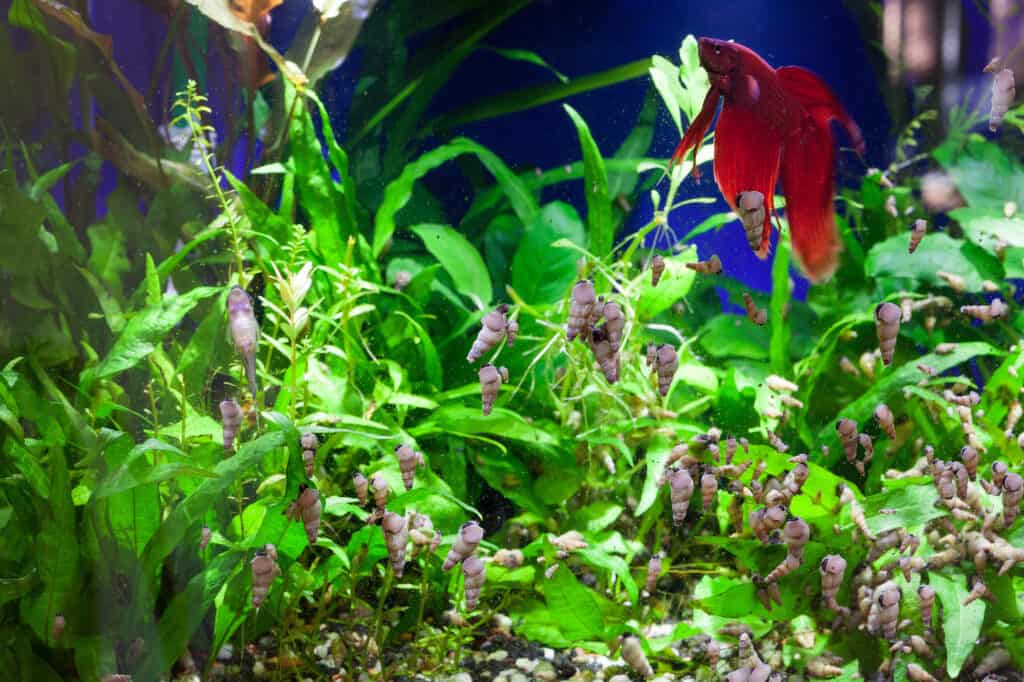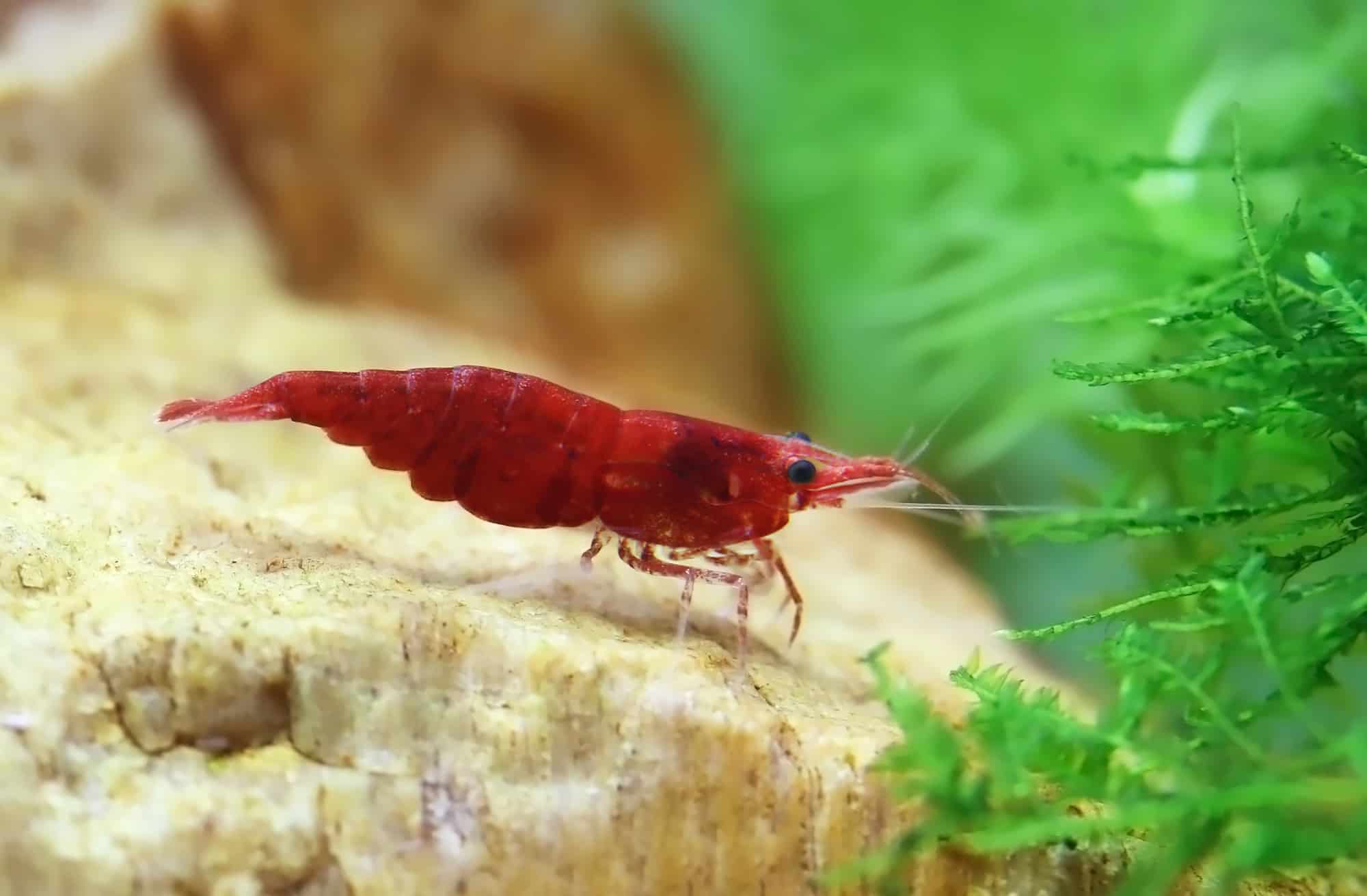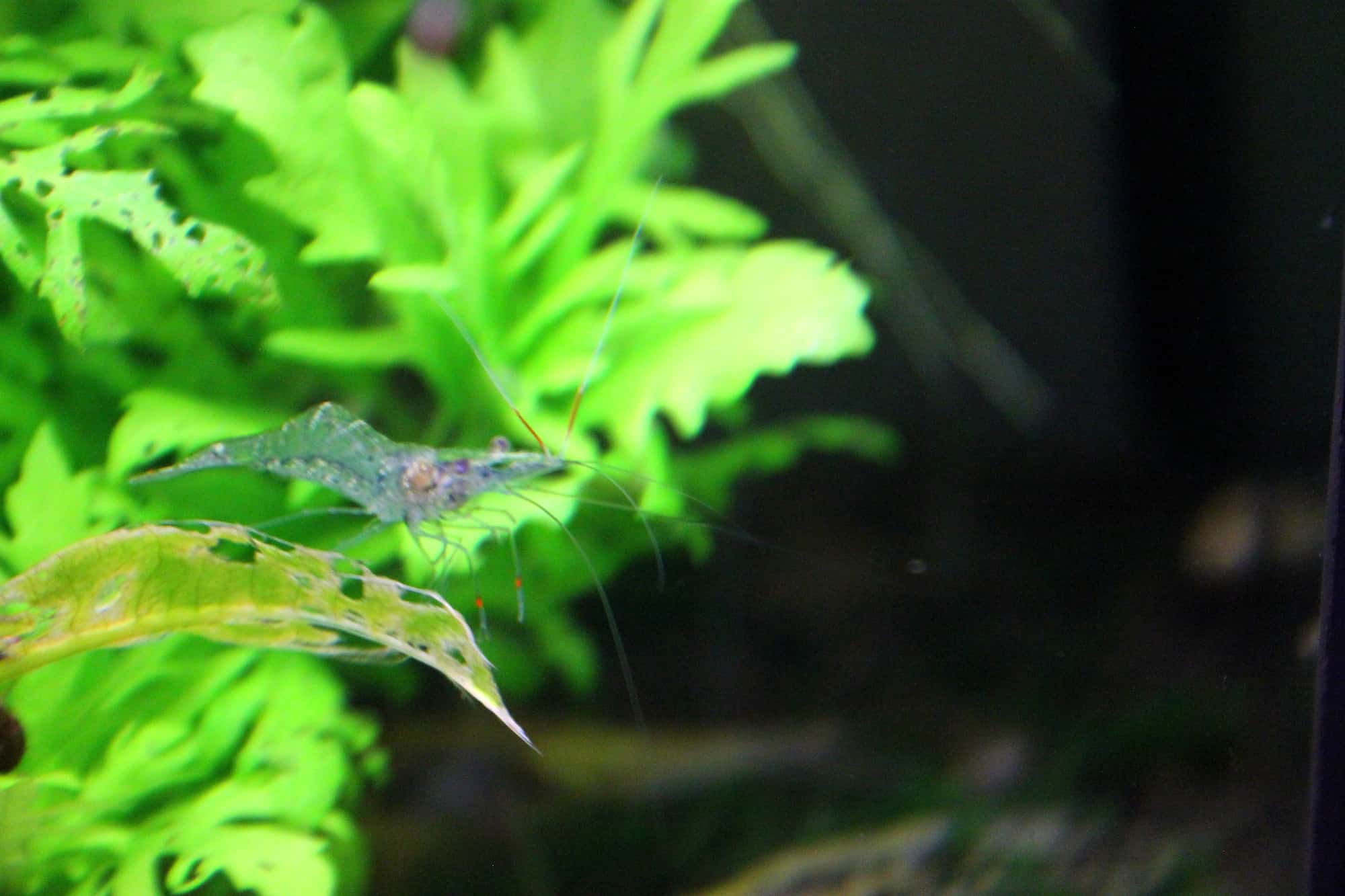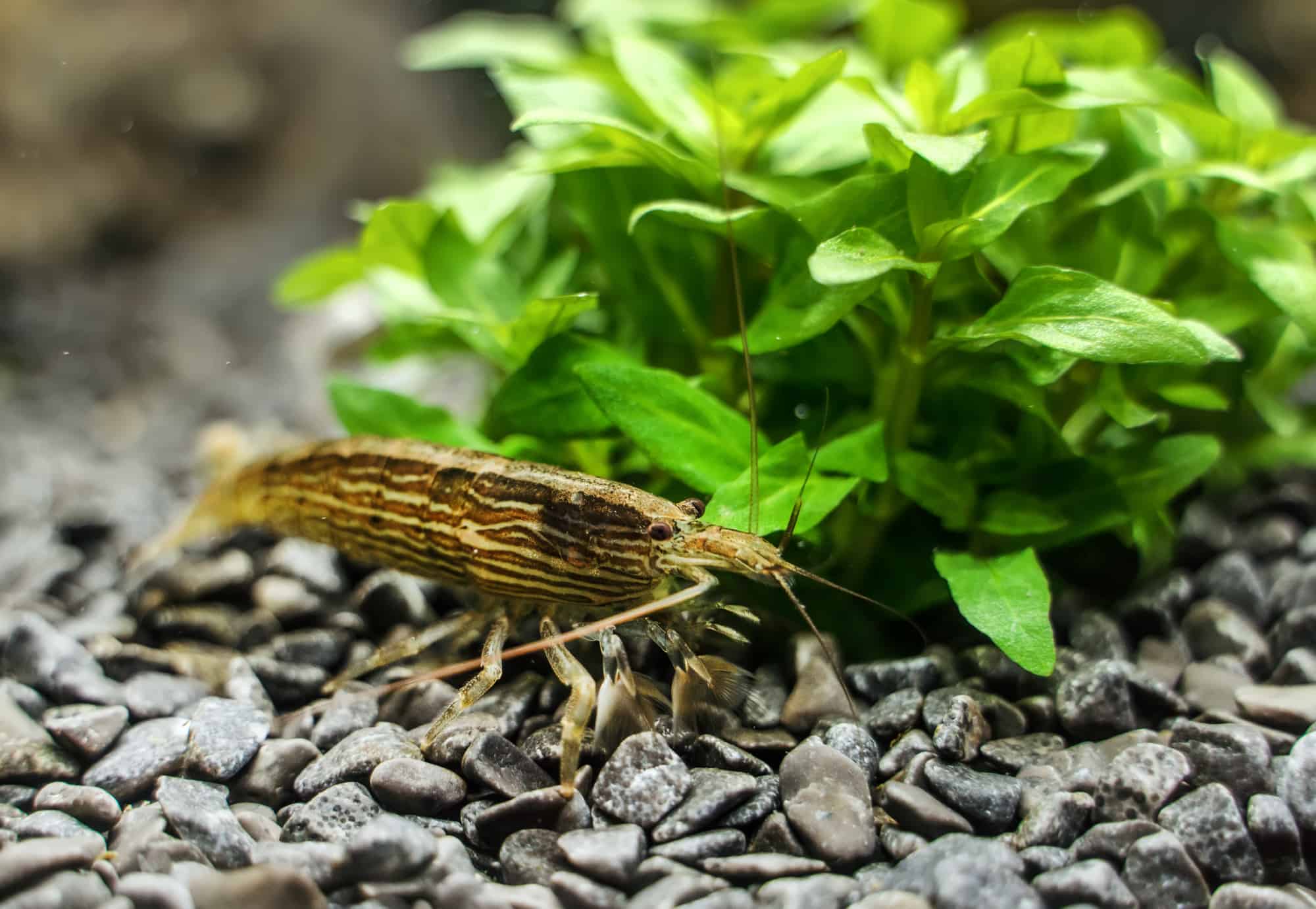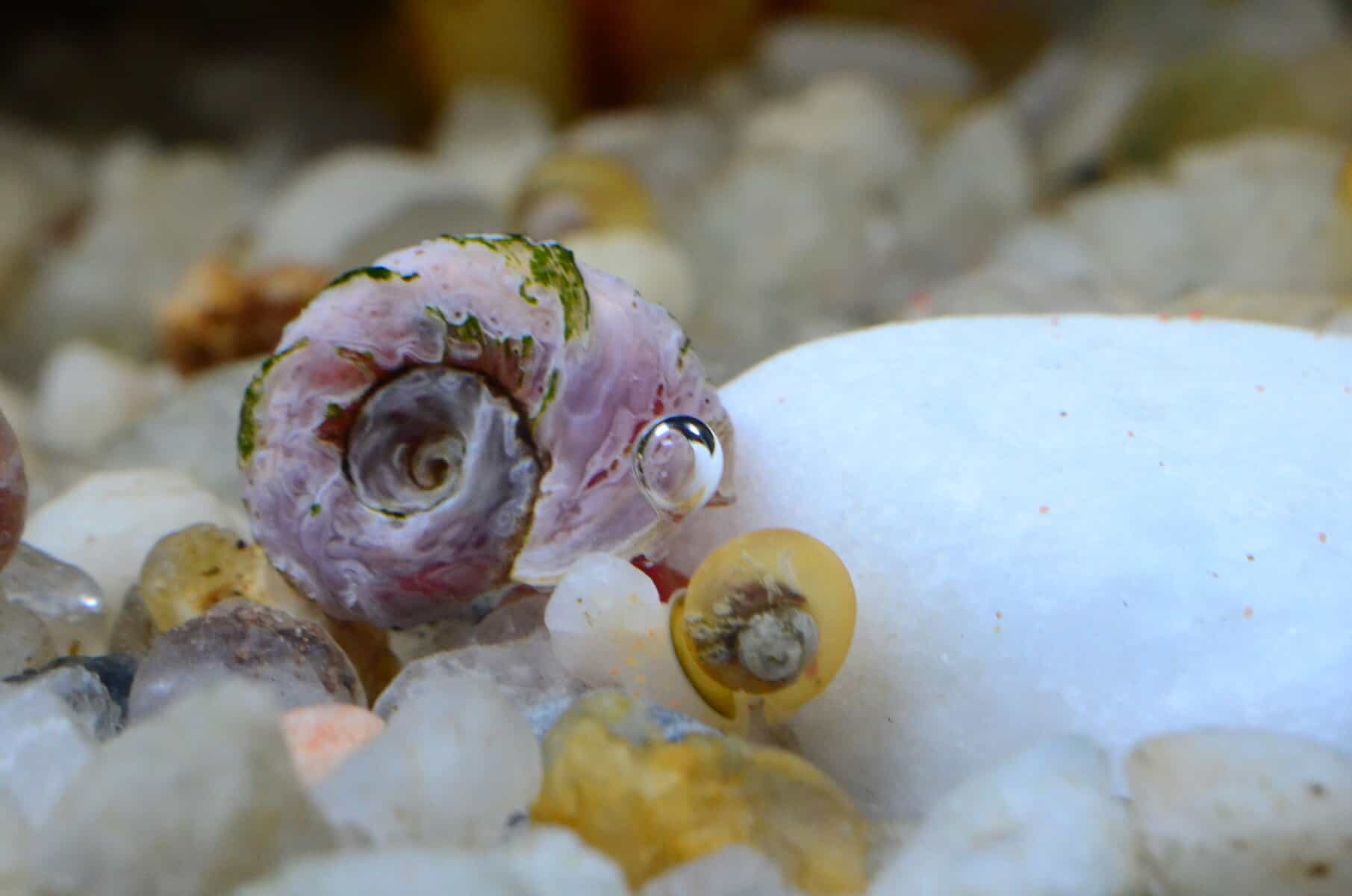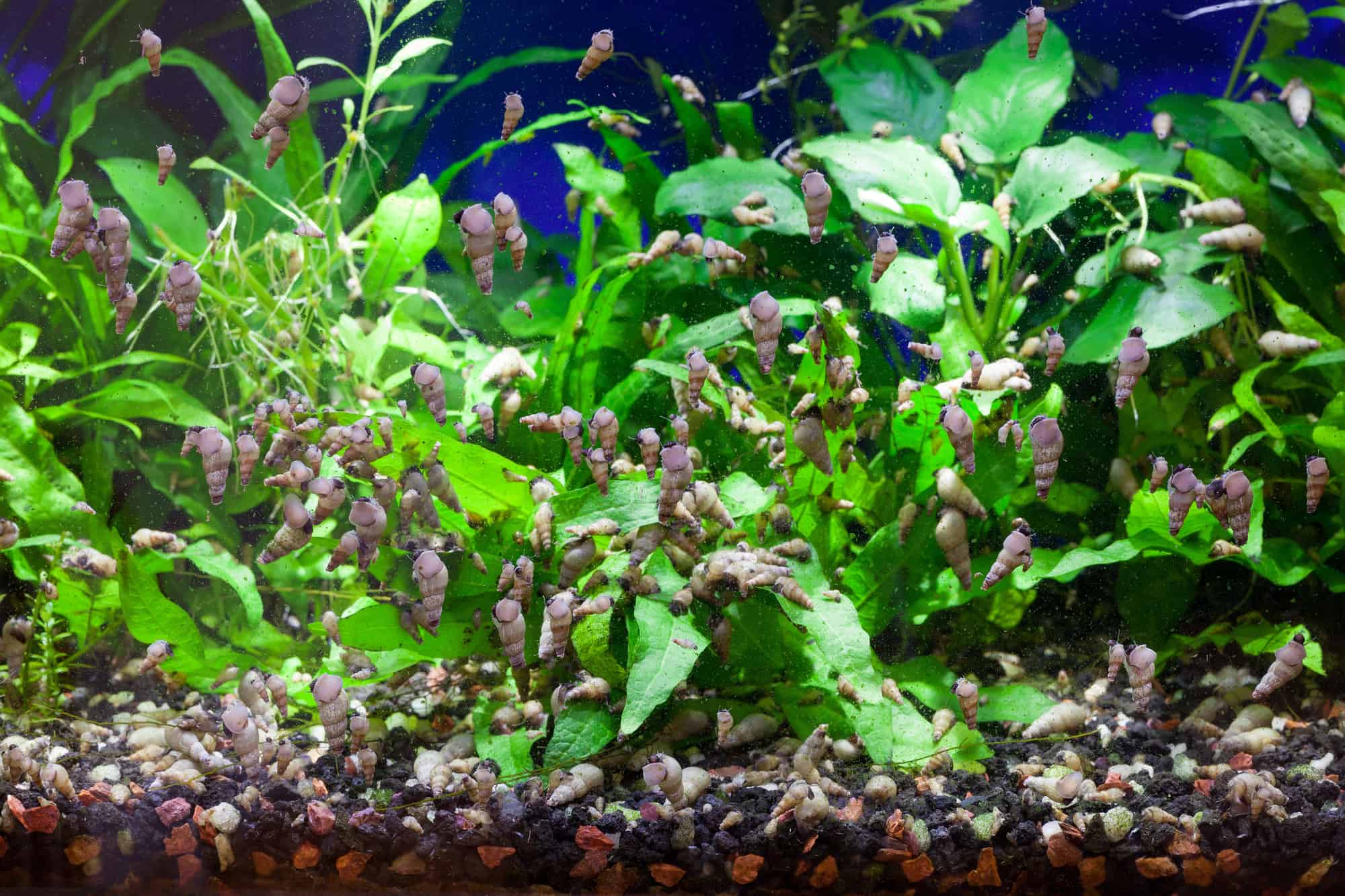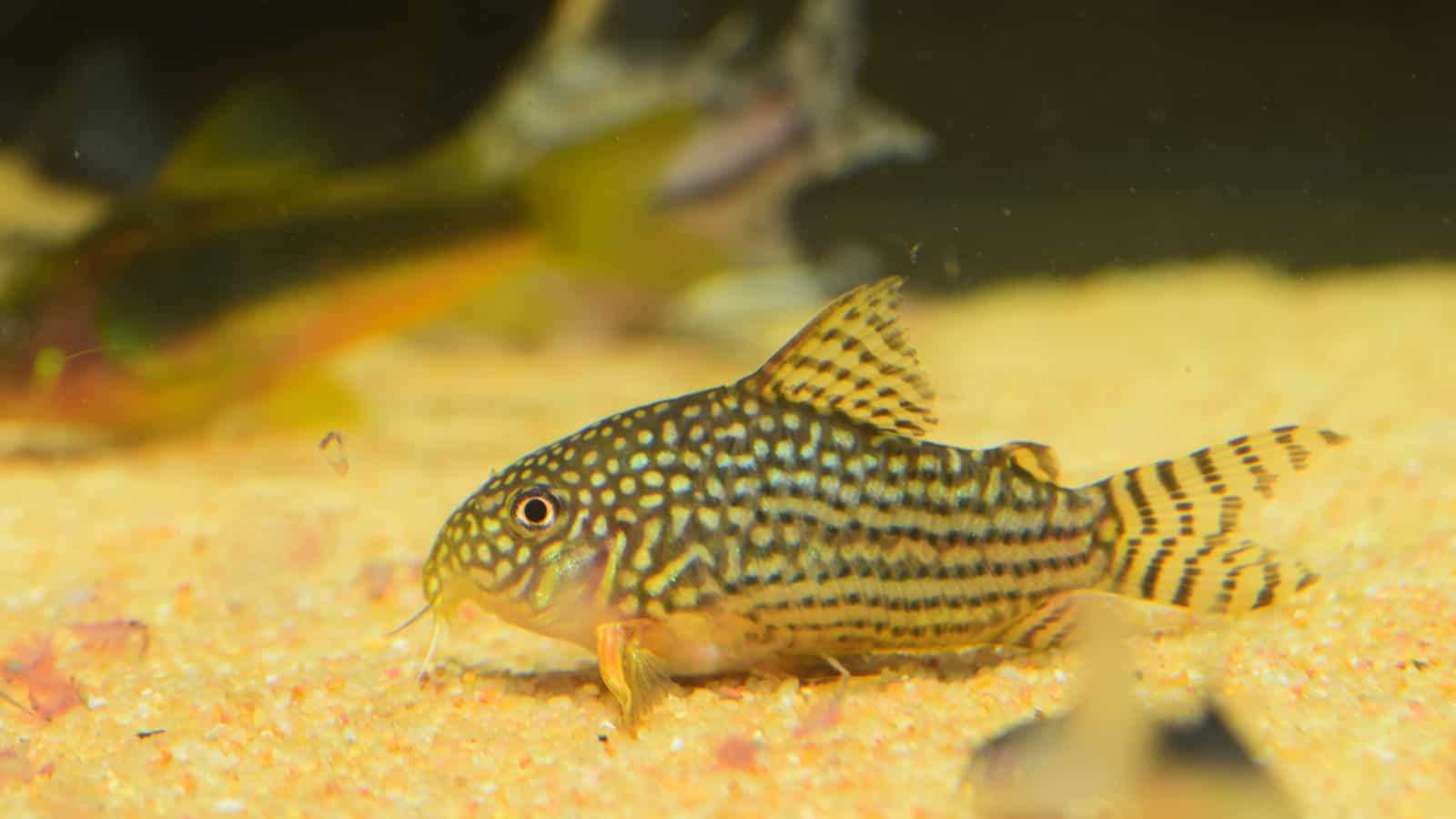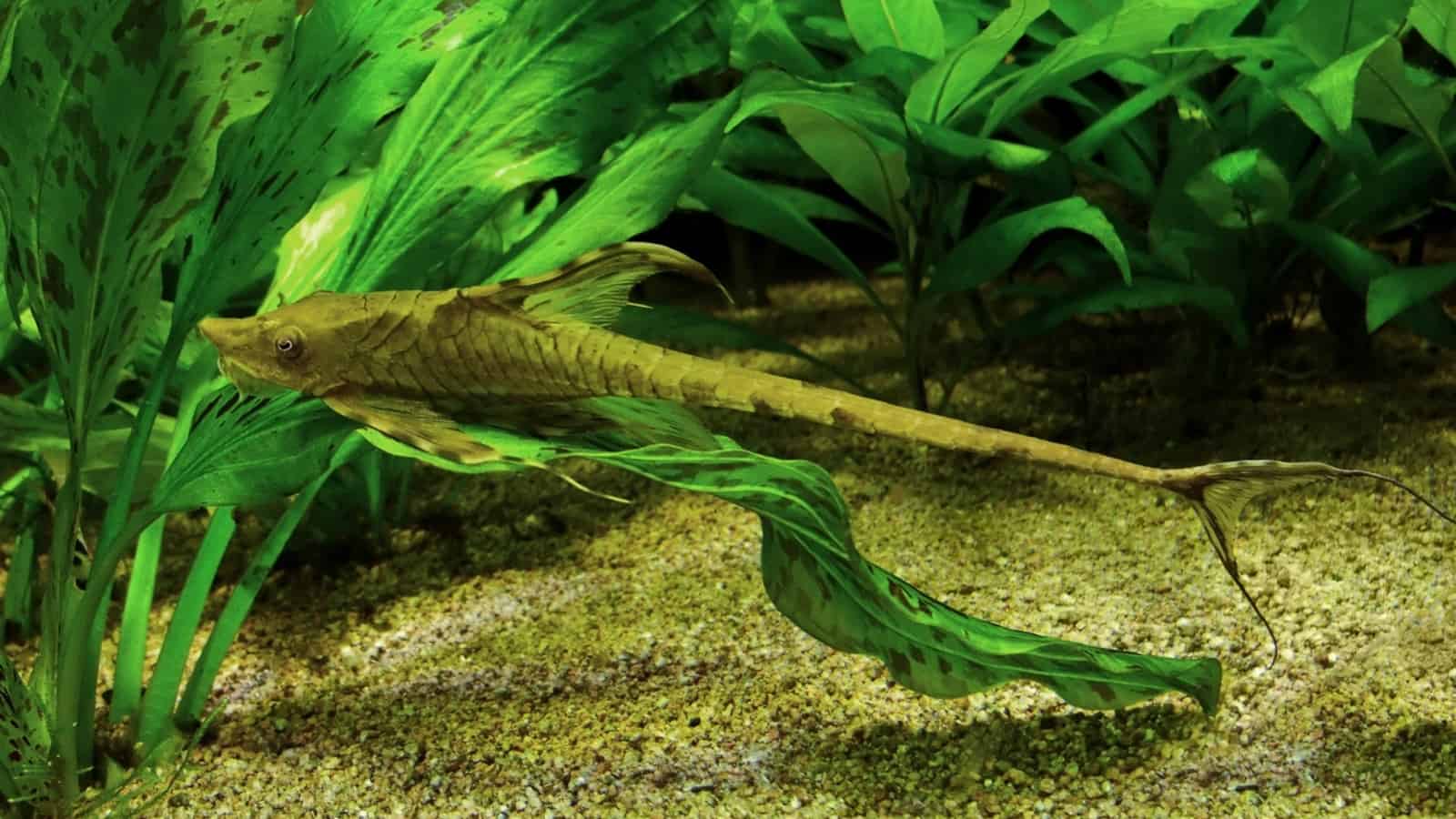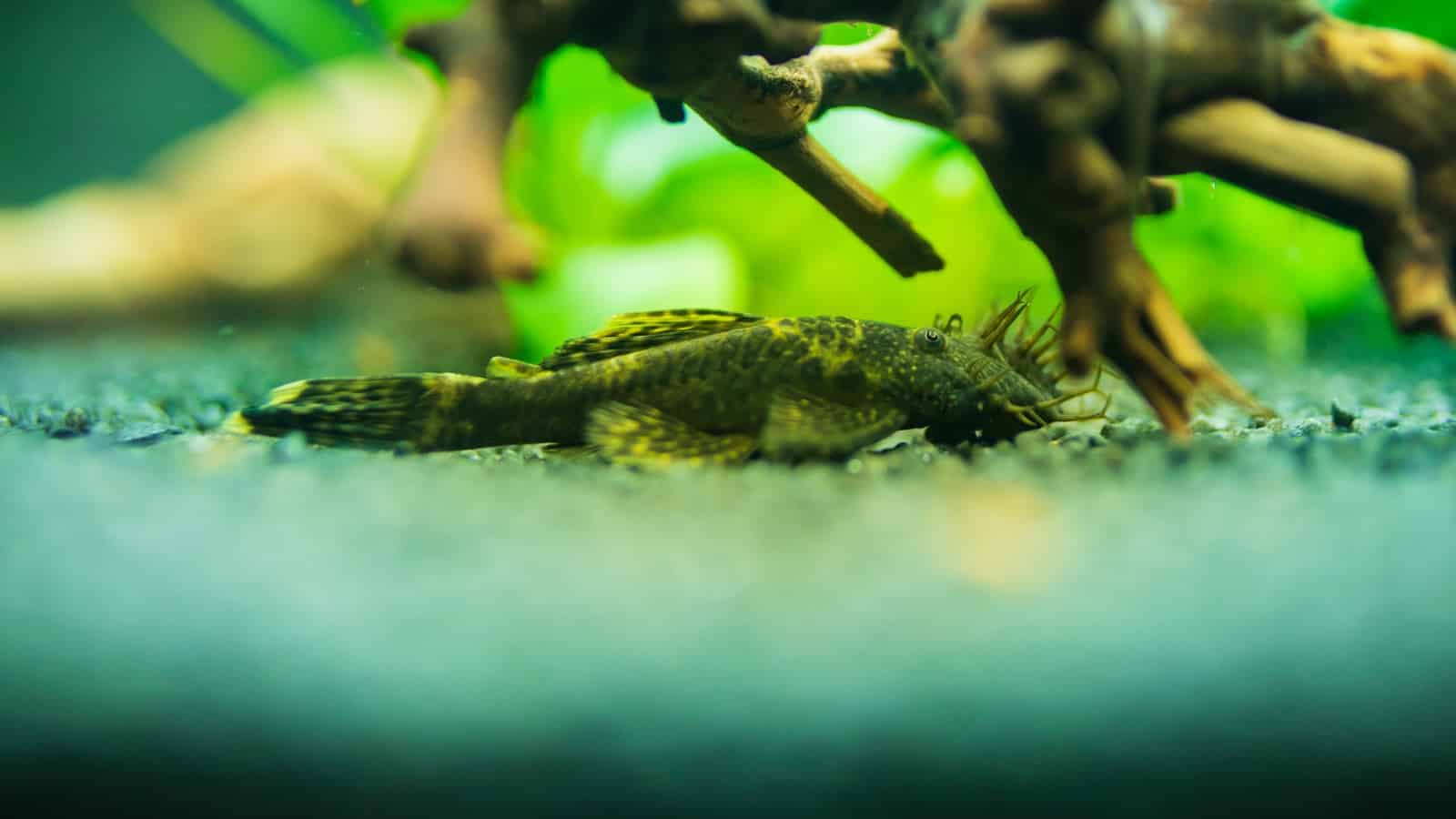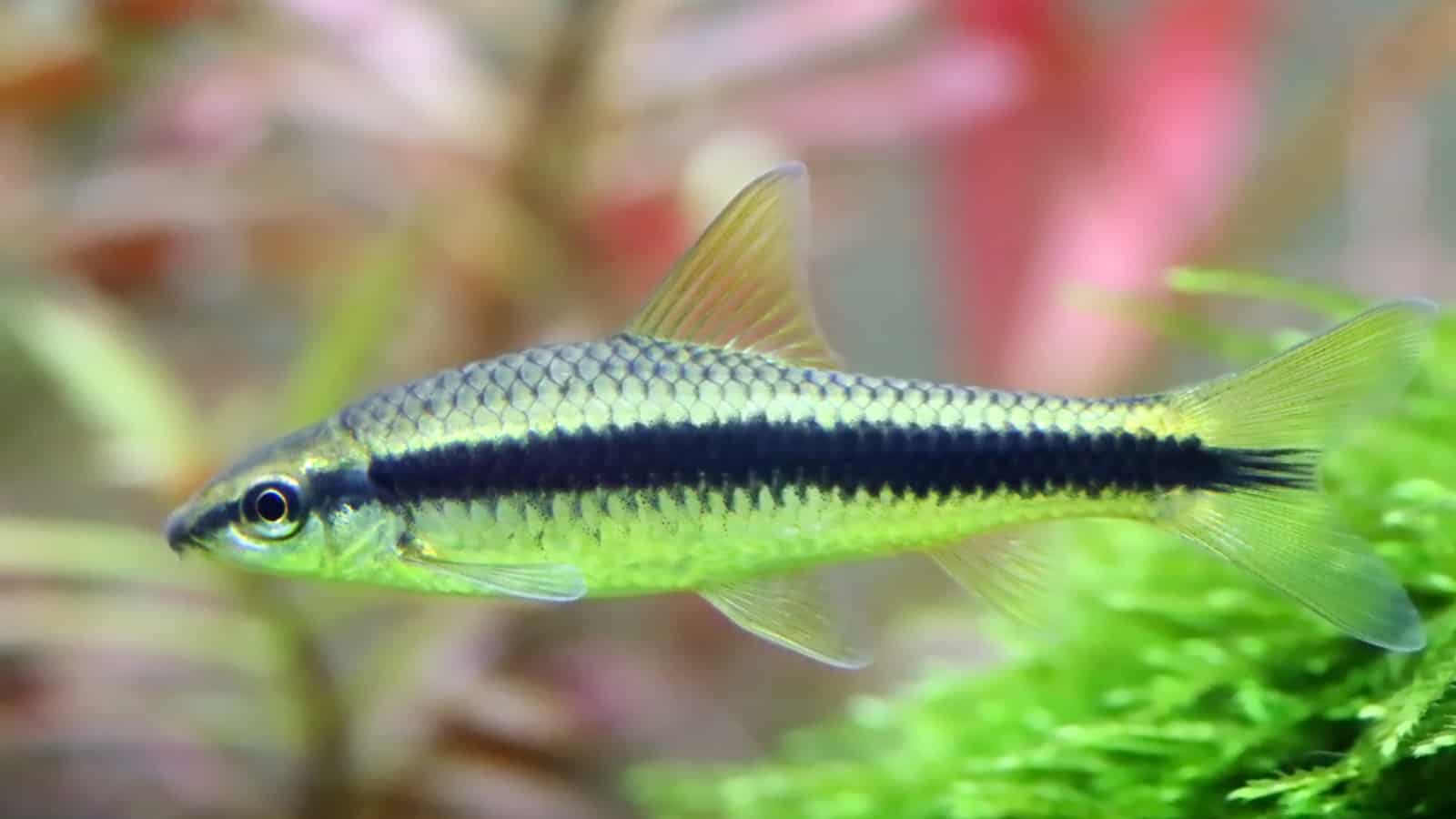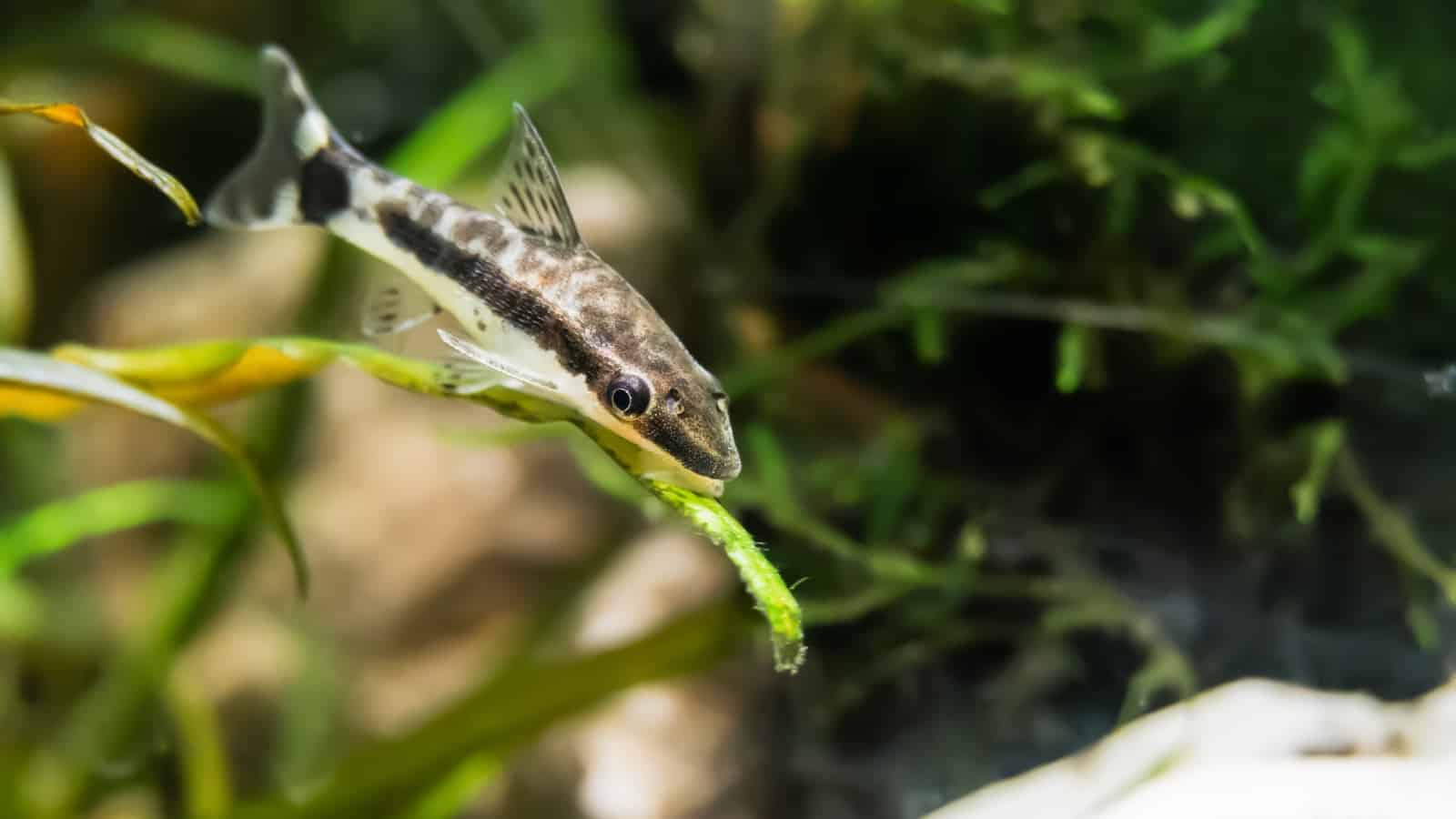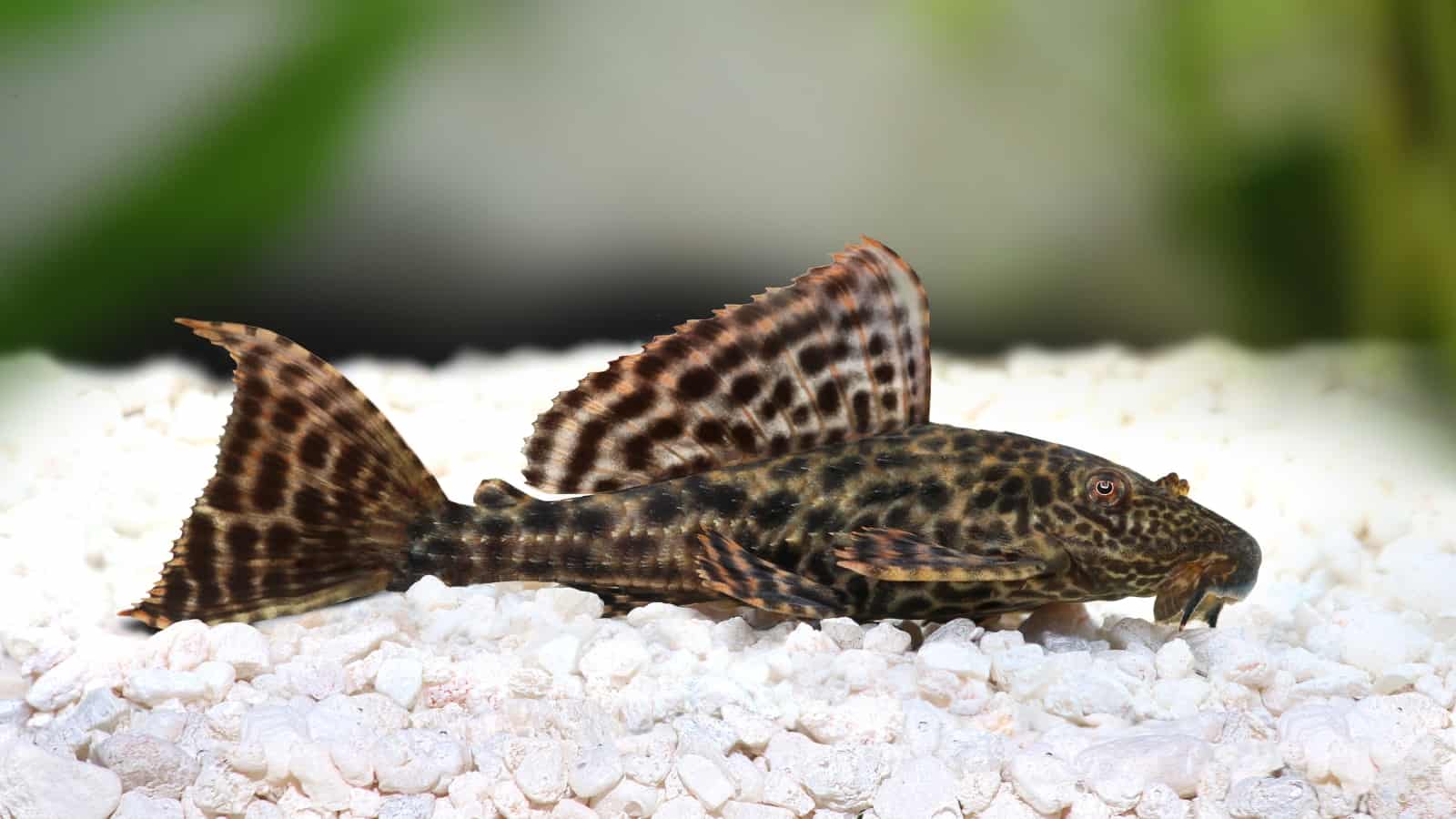Before I discovered the joys of algae-eating fish, I’d spend hours cleaning my aquarium glass with an algae scraper. Needless to say, I was overjoyed when I dispatched my first pleco to do this job for me!
Algae-eating fish and invertebrates not only help to keep your tank clean, but they’re also often fascinating tank mates in their own right. Here, you’ll get to know some of the best candidates for your betta tank.
Key Takeaways
- Small quantities of algae are a natural component of a freshwater fish tank, but large amounts can become problematic.
- Certain types of algae-eating shrimp, snails, and fish can help to keep algae levels to a minimum in a betta tank.
- While algae eaters can be a great boon to tank maintenance, they’re no substitute for proper tank maintenance.
Is Algae Bad for Your Fish Tank?
Many different types of algae appear in aquariums, some more benign than others.
Whereas brown algae and green algae are relatively harmless, blue-green algae and red or beard algae can be more difficult to get rid of.
If algae is growing on the viewing glass in your aquarium, it can hinder your view, and green water or ‘algae blooms’ can be unsightly and cause water chemistry imbalances.
In general, a small amount of algae is natural and relatively harmless, but most aquarium owners will try to keep algae in their tanks to a minimum.
What Causes Algae To Grow in Your Tank?
There are several reasons why algae may begin to pop up in your tank. Algae will often vigorously grow if you leave your aquarium light on for too long. Ideally, the lights in your fish tank should be off for around 12 hours out of 24.
Your betta fish will benefit from the right amount of light and lighting schedule in its tank, and your live plants will need light to grow too. One way to regulate this is through a socket timer switch. These timers will allow you to turn the lights on and off at preset times.
When you set up your tank, always site it well away from a window that receives direct sunlight, since exposure to direct sunlight daily will often encourage excessive algae growth.
Algae blooms often happen when the tank water is very rich in nitrates, which is also a bad thing for your fish. Be sure to carry out a 25% water change once a week, and ensure that your filter system is powerful enough to cope with the number of fish in your tank.
Test your tank’s water regularly to make sure that nitrates are below 20 ppm.
Best Algae Eating Shrimp
Many types of freshwater shrimp enjoy similar water conditions to betta fish. Also, they make peaceful tankmates for a community tank setup, as well as gobbling up algae. Shrimp don’t need much space to be happy, so they’re the ideal choice for a betta tank of modest size.
Cherry Shrimp
Cherry shrimp are tiny, brightly colored shrimp that make an attractive addition to a display tank, as well as removing algae from the tank glass, plants, and ornaments.
Cherry shrimp live for one to two years, growing up to just two inches long. Due to their small size, make sure to provide plenty of hiding places for your cherry shrimp.
If you have a mixture of male and female cherry shrimp, they will readily breed, and your betta may view the tiniest ones as a tasty snack!
They only require a small amount of food, and algae wafers are perfect. As well as that, the shrimp will happily live on the algae and debris in your betta tank.
Amano Shrimp
Amano shrimp make great tank mates for betta fish! They live for about three years and eat more than enough algae to keep your tank clean. In addition to this, they’re also larger than other shrimp species, which means they’re too large to be eaten by your betta fish.
Amanos will happily live on the algae in the tank, as well as eat detritus and uneaten food that falls onto the substrate. Make sure the tank is well-planted with plenty of hiding places. That’s important for Amanos, as they molt periodically and will seek shelter until their new shells harden.
As well as being widely regarded as the best algae-eating shrimp, Amanos are also unable to breed in freshwater, meaning they’ll never overpopulate your tank.
Ghost Shrimp
Ghost shrimp are also known as feeder shrimp. These cute crustaceans are peaceful creatures that eat algae, especially hair algae, although they will eat most other species too.
The water conditions in your betta tank will suit ghost shrimp just fine, and they will breed, provided that there’s plenty of plant cover and hiding places. Ghost shrimp grow to about one and a half inches in length and shouldn’t be confused with the larger, predatory ‘whisker shrimp’.
When you add ghost shrimp to your betta setup, be sure to add small groups of at least two to four. These are social critters who will not thrive if kept alone.
Bamboo Shrimp
Bamboo shrimp are an unusual algae eater that would make a useful addition to your community betta tank.
Bamboo shrimp don’t eat algae from the glass, ornaments, plants, or substrate in your tank. Instead, these shrimp filter-feed from the water currents in the tank, so you’ll need a filter system that generates a reasonable current for these guys to be happy.
You’ll need to have a large tank, ideally up to 55 gallons, to keep a small group of three of these shrimp.
Best Algae Eating Snails
Snails can also make suitable algae-eating tankmates for your betta, especially in smaller aquariums.
Snails are slow-moving, non-aggressive, and peaceable residents in a community setup that love grazing on algae. Some species are tiny, whereas others grow larger and have beautiful colors too.
Ramshorn Snail
Ramshorn snails can grow up to one inch in length and are voracious algae eaters. They don’t tend to eat healthy, live plants, although they will munch on dying vegetation, and tender leaves when they’re hungry.
Ramshorn snails can breed quite prolifically, so, although they only live for a year or so, you won’t need to worry about buying more. A starting colony of five snails should be plenty, though further generations might also overrun your tank!
Snails enjoy the same tank conditions as betta fish, and they only produce a tiny bio-load, which will have minimal impact on your water quality.
Malaysian Trumpet Snail
Malaysian trumpet snails eat mostly algae and plant matter that has dropped onto the substrate. One plus point of this species of snails is that they don’t tend to eat live plants unless there is no other food source in the tank.
Of the snail species that make good algae eaters to keep with bettas, Malaysian trumpet snails are one of the most attractive aquarium snail species, coming with a variety of different colored and patterned shells.
These snails are mainly nocturnal, digging in the substrate during the day, and carrying out much of their valuable tank cleaning duties at night.
Rabbit Snail
Rabbit snails are good algae eaters that won’t bother your betta fish. Happily grazing peacefully around the tank on the algae growing on surfaces and in the substrate, these impressive, large snails are also entertaining to watch.
These snails are very slow-growing, ultimately reaching around five inches long, so you’ll need a large tank to accommodate a few of them. Also, rabbit snails breed slowly, so you won’t be overrun with them, which can happen with other snail species.
Best Algae Eating Fish
Many bottom-dwelling fish species get along fine with bettas, and they eat algae too, so adding a few of these guys to your community setup is a win-win!
All the fish we’ve featured in this guide enjoy the same tank and water conditions as betta fish and are peaceful, non-aggressive species too.
Corydoras Catfish
Corydoras catfish are excellent betta companions. Living at the bottom of the tank, grazing on algae, and vacuuming up fragments of uneaten food that drift down from above, they do wonders to help keep the tank clean.
That said, you will need to supplement the cory’s diet with fish flakes, pellet food, or live and frozen foods to be sure that they receive all the nutrition that they need to thrive.
Corydoras grow to around two to three inches and are happiest when kept in small schools of at least five. These fascinating little catfish come in a range of different varieties, all of which are suitable for keeping with a betta fish in a 15-gallon tank or bigger.
You can expect your Corydoras catfish to live for around five years.
Whiptail Catfish
Whiptail catfish do require dietary supplementation, but they do extract most of their nutrients from algae, and a small school of these guys will make light work of keeping your tank algae-free.
These are quite large fish, growing up to four inches in length, so you’ll need a tank of at least 20 gallons to accommodate a pair of these catfish. Whiptail catfish are peaceful community fish that will not hassle your betta fish.
Whiptail catfish can live for up to 15 years.
Bristlenose Plecos
Bristlenose plecos (Ancistrus) are excellent algae eaters that will be happy living on the bottom of a large tank (ideally 25 gallons or more).
Although plecos mostly eat algae, you will need to supplement their diet with a small amount of protein to keep them healthy, ideally by feeding them freeze-dried or frozen brine shrimp or daphnia.
Bristlenose plecos are large fish, growing up to five inches in length, and have an average lifespan of between five to twelve years.
Siamese Algae Eater
The Siamese algae eater is an exceptionally good fish to choose for your betta tank if you want something that will keep the environment clear of algae.
Siamese algae eaters will eat any algae that are growing on your plants without eating the plants, unlike some species of snails. However, you will need to supplement their diet to help them thrive.
Siamese algae eaters need to be kept alone or in groups of at least five, ideally in a tank of more than 30 or 40 gallons. These guys can grow to around six inches in size, and they live for up to 10 years, which is why you need a big tank if you want to keep them.
Be careful that you don’t confuse Siamese algae eaters for Chinese algae eaters. Although the two species look similar, the Chinese algae eater is a much more aggressive fish that may not be a good tank mate for a betta!
Otocinclus Catfish
Otocinclus catfish are relatively small fish, growing to just two inches in length. These bottom dwellers like to live in a small school and prefer a large environment in which to roam.
These catfish are confirmed algae eaters, spending much of their time swimming around and foraging in the substrate on the hunt for algae. However, these energetic tank cleaners do need an aged tank that has plenty of algae for them to be happy.
Otocinclus catfish are peaceable fish that can live for up to five years. Just keep in mind that they require a higher level of care than other algae eaters, so are only recommended for intermediate to advanced fish keepers.
Plecostomus
Plecos are incredible algae eaters, and they will happily consume all kinds of plant waste too. There are many different species of plecos, but it’s best to keep to pit-bull, clown, and rubber lip plecos, as these fish are relatively small in comparison to other varieties.
Plecos are not aggressive, and they’re armored with tiny spines that will deter your betta if he decides to attack one. Because they can turn into such monsters, be sure to do your research to ensure your tank is big enough for the type of pleco that you choose!
Final Thoughts
You can help to keep your betta tank free from algae, or at least control its growth, by introducing one or more algae eaters to the setup.
You can choose from snails, shrimp, or one of the species of bottom-dwelling fish that we’ve mentioned in this article, any of which will help to keep algae levels down.
However, you should still keep your tank environment tidy and healthy by removing debris, maintaining the filters correctly, and carrying out regular water changes.
